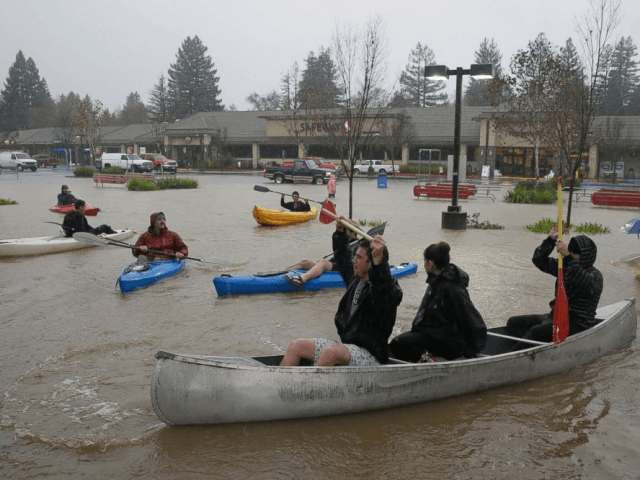This week, the National Climate Prediction Center raised the probability of an El Niño occurring in the Northern Hemisphere through this summer to 90 percent. Some meteorologists have predicted that a “super El Niño” could even linger through the remainder of this year.
Last week, San Diego recorded its wettest day ever in May, when 1.63 inches of rain fell at San Diego International Airport.
With all the upbeat predictions, it might be easy for Californians to think the four-year-long drought is finally coming to an end.
But Bob Yamada, water resources manager at the San Diego County Water Authority, says Californians should keep the champagne corked, at least in the short term.
“El Niño…could give us some relief from the drought, but we wouldn’t count on it bringing us out of the drought and out of reservoir storage deficits,” Yamada told the San Diego Union-Tribune.
Those reservoir deficits are a key piece of California’s water woes; Lake Oroville, the state’s largest reservoir, sits at just 56 percent capacity. The rain that fell on San Diego this month did not reach Northern California, which supplies a significant amount of the city’s water.
The news doesn’t get any better in Las Vegas: Lake Mead sits at just 38% capacity, a full 140 feet below what it could normally hold.
“Lake Mead hasn’t been this low since we were filling it in the 1930s,” U.S. Bureau of Reclamation spokeswoman Rose Davis told the Los Angeles Times last month.
An historically low snowpack (3% of normal) in the Sierra Nevada mountains and a shrinking supply of California groundwater are badly compounding the problem.
While Gov. Jerry Brown recently ordered a 25% statewide cut in urban water use, the conservation effort does not apply to agricultural interests, which use as much as 80% of California’s water supply. It also fails to solve the state’s subsidence problem, in which underground water is removed through wells at a faster rate than natural rain can replenish it.
So, with little alternative, Californians will turn their gaze to the skies this year in the hope of catching some rain from a “super El Niño,” a stronger form of the Pacific storm patterns that arise from a warming in ocean surface temperatures. National Weather Network meteorologist Scott Sutherland writes that “if some of the more aggressive forecasts pan out, it’s even possible that [this summer’s El Niño] could become the strongest El Niño on record.”
Others weather experts remain wary. One thing remains nearly certain; unless it becomes the strongest El Niño of all time, the effect on California’s drought is likely to be minimal.
“El Niño is not a quick fix for the drought. The days that El Niño pulls you out of a drought are in the rearview mirror,” Jet Propulsion Laboratory climatologist Bill Patzert told the Union-Tribune. “There are no (magical) drought-busters anymore. The real drought-buster is changing human behavior and water management. Now is the perfect time to make major changes in our lifestyle.”
To that extent, California is already doing all it can to ensure its survival.

COMMENTS
Please let us know if you're having issues with commenting.